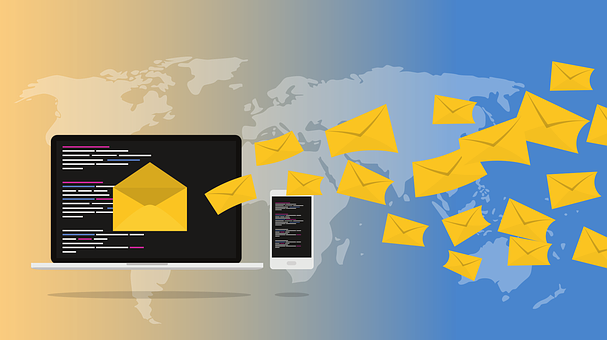An email banner is a recipient’s first visual element when opening an email. It sets the tone, delivers key messages, and enhances brand identity. Effective email banner design is crucial in making a strong first impression and driving engagement, whether promoting a product, announcing a sale, or building brand awareness.
This guide explores top tips and best practices for crafting high-impact email banners that grab attention and encourage click-throughs and conversions.
Why Is Email Banner Design Important?
- Boosts Engagement – A well-designed email banner captivates your audience, increasing the likelihood of scrolling down and reading more.
- Enhances Branding – Consistent branding elements (logo, colours, typography) in your banner help reinforce brand recognition.
- Drives Conversions – A compelling call-to-action (CTA) within the banner can lead to higher click-through rates and conversions.
- Improves Readability – A clean and structured banner enhances message clarity, ensuring recipients understand your key message at a glance.
Top Tips for Email Banner Design to Maximise Impact
Keep It Simple and Clear
Your email banner should communicate the main message quickly. Overcrowding it with too much text or images can overwhelm the reader. Stick to a clean email banner design with a clear focal point.
Best Practices:
- Use minimal but impactful text.
- Highlight only one key message or offer.
- Keep design elements balanced and uncluttered.
Optimise for Mobile Responsiveness
More than 50% of emails are opened on mobile devices, making mobile-friendly email banner design essential.
Best Practices:
- Ensure the banner scales properly on all screen sizes.
- Use large, legible fonts that are easy to read on mobile.
- Avoid small call-to-action buttons that are difficult to click.
Use High-Quality Images
Crisp, high-resolution images make your email banner visually appealing and professional. Blurry or pixelated images reduce credibility and impact.
Best Practices:
- Use JPEG or PNG formats with optimised file sizes.
- Select images that align with your brand and campaign.
- Avoid stock images that look generic or outdated.
Maintain Brand Consistency
Your email banner should reflect your brand’s identity, tone, and colour scheme to maintain a professional and recognisable look.
Best Practices:
- Use brand colours and typography.
- Incorporate your logo for instant brand recognition.
- Keep a consistent design across all email campaigns.
Use a Strong Call-to-Action (CTA)
Your CTA should be clear, compelling, and easy to click to encourage user engagement.
Best Practices:
- Make the CTA button stand out with a contrasting colour.
- Use action-driven text like “Shop Now,” “Sign Up,” or “Get Started”.
- Place the CTA above the fold so it’s immediately visible.
Ensure Fast Loading Times
Slow-loading email banners can reduce engagement and increase email abandonment.
Best Practices:
- Compress images to reduce file size without compromising quality.
- Avoid animated GIFs that are too large (keep under 200 KB).
- Use simple, lightweight design elements.
Create a Sense of Urgency
Encouraging immediate action in your email banner design can lead to higher conversions.
Best Practices:
- Use time-sensitive phrases like “Limited Time Offer” or “Only a Few Left!”.
- Highlight a countdown timer (if applicable).
- Feature bold and eye-catching typography for urgency.
Test Different Variations (A/B Testing)
A/B testing helps identify what email banner designs perform best in terms of engagement and conversions.
Best Practices:
- Experiment with different colours, CTAs, and layouts.
- Test image vs no-image versions.
- Analyse click-through rates to refine your design.
Common Email Banner Design Mistakes to Avoid
- Too Much Text – Keep your message concise and easy to digest.
- Poor Colour Contrast – Ensure text and CTA buttons stand out against the background.
- Ignoring Mobile Optimisation – A banner that doesn’t scale well on mobile devices leads to a poor user experience.
- No Clear CTA – Every banner should have a definitive call to action guiding the recipient on the next steps.
FAQs About Email Banner Design
What size should an email banner be?
The recommended email banner size is 600-800 pixels wide and 200-300 pixels high. It should be mobile-friendly and scale well across devices.
How do I make my email banner clickable?
You can make your email banner clickable by adding a hyperlink to the entire banner or embedding a CTA button within the design.
Should I use GIFs in email banners?
Yes, animated GIFs can enhance engagement, but they should be optimised for fast loading (under 200 KB) to prevent slow email load times.
What is the best format for an email banner?
JPEG and PNG are the most common image formats for email banners, as they provide high-quality visuals with manageable file sizes.
How can I measure the success of my email banner?
Track metrics like click-through rate (CTR), open rate, and conversion rate to measure the effectiveness of your email banner design.
Can I use text in an email banner?
Yes, but limit text usage to key points like a headline, subheading, or CTA. Too much text can clutter the design.
How often should I update my email banner design?
Refresh your email banners based on seasonal promotions, new branding updates, or A/B testing results.
Contact Bizam Today
A well-designed email banner is a powerful marketing tool that enhances engagement, branding, and conversions. Following these best practices can create impactful, visually appealing email banners that drive results.
Whether running a promotional campaign, launching a product, or strengthening your brand identity, email banner design is crucial in grabbing attention and encouraging action.
Contact our team today to get started.
